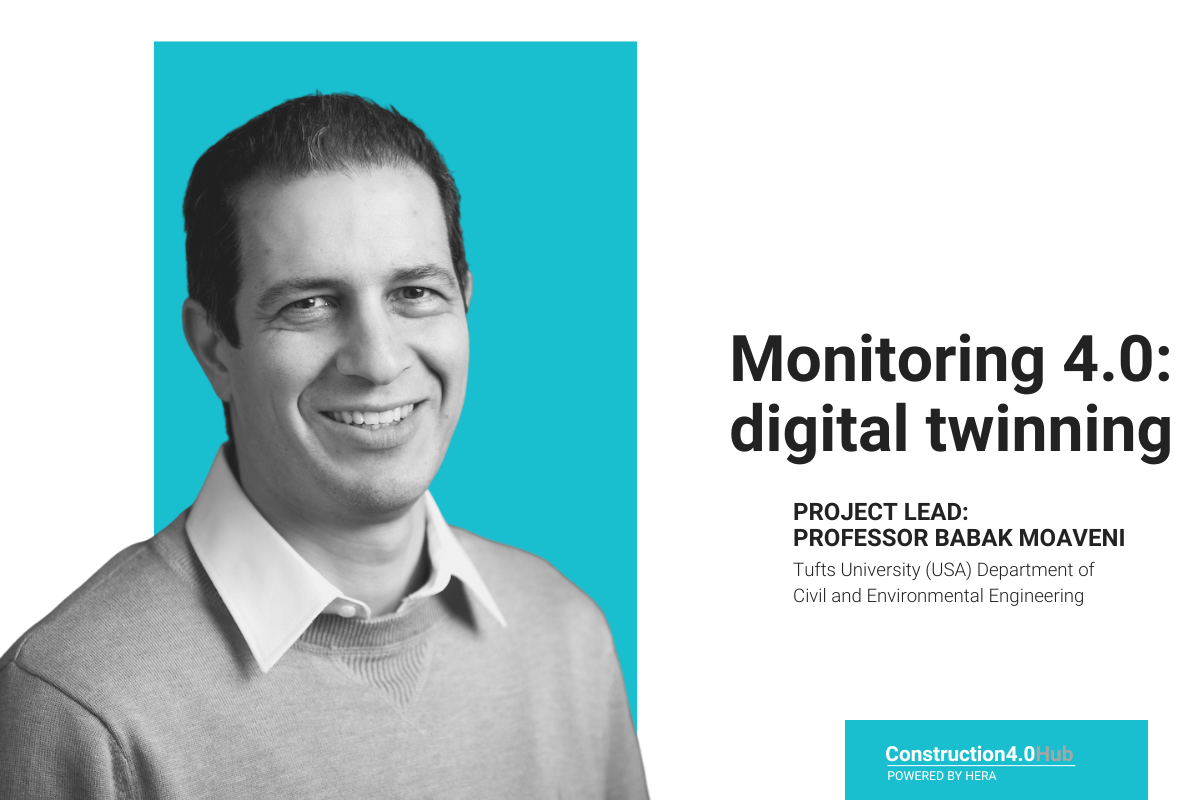The third research program in our Construction 4.0 program is the development of Monitoring 4.0. (the other two programs are Circular Design and Smart Construction).
The Monitoring 4.0 research will develop a framework for:
- objective/improved monitoring and performance assessment of structural systems using in-situ data and numerical models; and
- optimal instrumentation plans to maximise the information gain while limiting the monitoring and instrumentation cost.
The resultant novel calibrated digital twin, as an integral part of CPCS (insert figure from previous overarching standardisation program), will be used to compare the overall performance of structural systems to design expectations and identify modelling errors.
The Monitoring 4.0 program is led by Professor Babak Moaveni, Department of Civil and Environmental Engineering, Tufts University (USA) and Dr. Kaveh Andisheh, GM of Structural Systems, HERA. Babak has extensive experience in instrumentation, structural health monitoring and performance assessment of structures. They are supported by Dr. Saeed Eftekhar-Azam, Assistant Professor, University of New Hampshire (USA), who is expert in Bayesian system identification methods for structural health monitoring.
Monitoring 4.0: integrating structural health monitoring and digital twinning into design, construction and maintenance
This project extends the benefits of adopting structural health monitoring beyond a tool for decision making on a single structure. This project integrates structural health monitoring (SHM) into the entire design, construction, and maintenance cycle. In doing so, the information obtained from data will be used for enhancing the design and construction processes for the new buildings. In addition, this project will contribute to the state of the art in (i) optimal sensor placement; and (ii) recursive Bayesian estimation.
Monitoring 4.0 provides asystematic solution for mitigating the effects of uncertainty via integration of advanced data analytics, machine learning, and physics-based and/or data-centric models of structural systems. In this regard,
Monitoring 4.0 can be used for direct measurement or indirect estimation of external loads, estimation of material properties, and the geometry.
Development of Monitoring 4.0
The research aim of Monitoring 4.0 is to develop a framework for digital twinning of steel and RC buildings using data from an optimally designed array of sensors. The digital twin can provide insight about the performance of the as-built structure and how it compares with expected performance during design. The developed digital twins will utilise nonlinear finite element models.
Monitoring 4.0 instrumentation
Design and instrumentation plans will be implemented on 2-3 existing and 2-3 new buildings. The instruments will include high-resolution vibration sensors connected to a continuous monitoring system with data available through the internet. Buildings will be selected to have a variety of materials (steel and reinforced concrete) and design forms.
Digital twinning of structural system using measurements
A sequential Bayesian model updating algorithm will be formulated and implemented for digital twinning of instrumented buildings. In this approach the initial model used in the design process will be updated/integrated with measured data to represent the as-built structural system.
Validation of digital twinning framework
The proposed digital twinning framework will be implemented and evaluated when applied on the instrumented buildings using the collected data.
Comparison of as-built and as-designed performances
Evaluation of building as-built performance and comparison with designed performance to create a feedback loop to designers. Thus, the circular design, smart construction and monitoring 4.0 research programs are essentially continuous vs contiguous.


